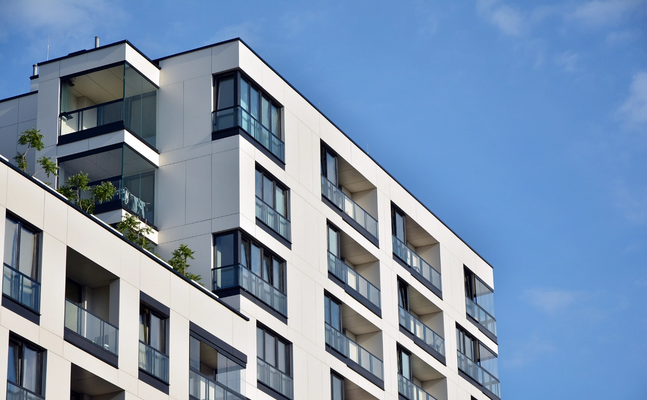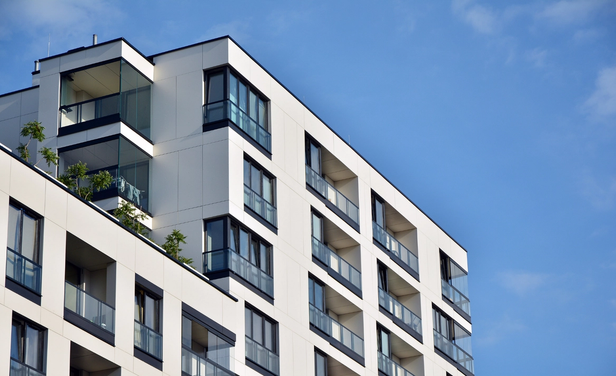Subscribe to our newsletter
The next time you are walking past a row of buildings, look up and consider for a moment that many of those buildings will still be in use decades from now.
In the United Kingdom, it’s estimated that 80% of the homes that people will inhabit 30 years from now have already been built. However, the world is rapidly changing, and the demand for smart home connectivity has never been greater, both for the convenience that smart home technology affords and the sustainable practices that it promotes.
Older buildings simply cannot provide the infrastructure needed to accommodate these new demands. That’s why smart retrofitting is a clear solution.

Keep reading to learn more about what smart retrofitting is, why it’s important, and which smart devices best lend themselves to short and longer-term retrofit projects.
Want to speak with an expert about your retrofit project? Request a demo and we’ll follow up with you!
What is Smart Retrofitting?
Smart retrofitting is defined as the process of implementing smart technology into retrofit projects. As an example, a rental housing asset might decide to install smart locks on its old doors to increase convenience and better manage access on-site.
Apart from giving older buildings modern technology, one of the primary purposes of smart retrofitting is to reduce the amount of carbon emissions produced by a typical rental building. This is a crucial step toward reaching the UK’s goal of net zero emissions by 2050.
From current day until 2030, it is estimated that global capital expenditures in energy, transportation, food, and land-use industries will amount to £50 trillion. The market opportunity in the UK alone is expected to reach a £1 trillion valuation by 2030 for companies that provide the goods and services necessary to reach net zero.
These numbers indicate that smart retrofit rental homes have huge growth potential and can contribute a great deal to net zero progress over the next several years. In addition, it prepares housing assets for the future of smart design, which will enable them to prosper in the long run.

The Benefits of Smart Retrofitting
It is now possible to retrofit rental homes with smart home conveniences. Smart devices like electronic locks and leak detection sensors enable management teams to work smarter, not harder, while also providing crucial information about energy consumption, community access, and more.
This is critical for housing developments that must cut back on emissions. This intel also goes a long way in making the case for ESG compliance – something that will define profitable housing investments in the very near future.
Today's residents also want smarter homes, so it's imperative that operators retrofit their rental assets in order to provide a smart living experience. According to YouGov, 57% of British employees want the ability to continue to work from home after the pandemic. They can no longer afford to rent homes that do not have adequate connectivity.
Retrofit-Ready Smart Devices
Smart retrofitting can involve simple or more extensive timelines. Some products are well-suited for retrofit projects and provide plenty of return in the long run, but may take longer to implement. These include:
Smart locks, which let residents and guests enter a unique code to enter their homes. Building operators can remotely manage access as needed, in the event of a lockout or vacancy.
Leak detection sensors that prevent catastrophic, yet commonleaks. Every day, pipes across the UK leak enough water to fill 1,245 Olympic swimming pools.
Other products are easier to install and less expensive to implement, resulting in savings over time:
Smart plugs provide lamps and other small devices with smart connectivity and remote management. With smart plugs, residents can better control their energy output and customise home settings for elevated comfort.
Video doorbells, like those manufactured by Ring, are a great upgrade for residential door frames. They can be easily installed in rental homes and provide a live view of the front door in addition to traditional doorbell functionality.

Get Started with SmartRent
Investing in smart retrofitting is a worthwhile endeavour, especially for rental buildings that need to cut back on energy consumption. Most agree that retrofitting is necessary if the UK is to reach its goal of net zero emissions by 2050.
When it comes to smart retrofitting, choosing the right smart home devices is crucial. Request a demo to learn more about SmartRent's smart home technology solutions and how they can be used when smart retrofitting your own rental portfolio.

